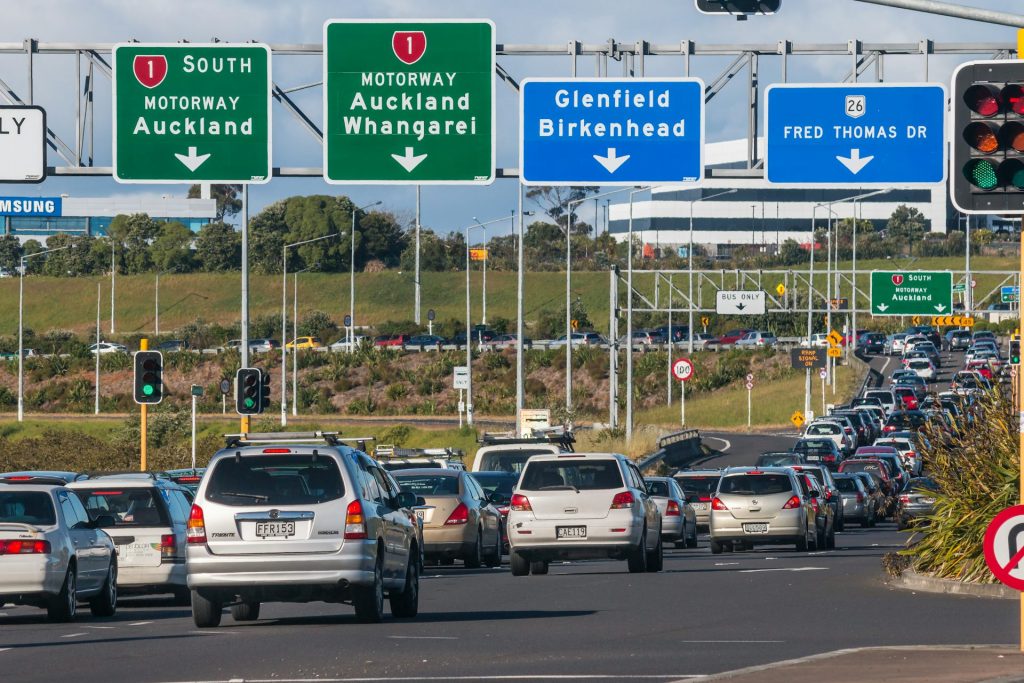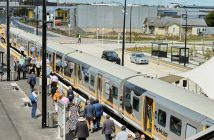The Government plans to work with Auckland Council to implement time of use road charging to reduce congestion and improve travel time reliability. Shane Martin, Principal Economist and People Leader at MRCagney, explores what congestion charging aims to accomplish and what needs to happen first

If you know any economists, you’ll know that we rarely agree on anything. This is why congestion charging is so interesting to me – it’s one of the only topics I can think of that economists nearly unanimously agree is a good idea if done right.
While I don’t want to get into the specifics of what congestion charging might look like in Auckland or how to best implement it – there is plenty of time to argue about that later – I do want to talk about congestion charging more generally – what does it try to accomplish and why?
But before I do that, it’s necessary to point out that road user charges (RUCs) and congestion charging are different topics and shouldn’t be lumped together. RUCs are to pay for the wear and tear that vehicles impose on the roads. They are an alternative to a fuel levy, but the purpose is the same – pay for the maintenance of roads. RUCs are worthy of their own discussion, but do not belong in the discussion about congestion charging.
This is because congestion charging has nothing to do with road maintenance. They are a mechanism to manage demand for roads during peak times. Talking about RUCs in a discussion about congestion charging would be like talking about refrigerators in a discussion about the best way to cook a steak. Sure, you keep a steak in the refrigerator, and you want the refrigerator to work, but that’s got nothing to do with how you cook the steak.
The theory of congestion pricing
William Vickrey first suggested congestion charging in 1952 for subways in New York City.
The theory behind congestion charging is really simple. When the price of something goes up, people buy less of it. In this case, “it” is travel by private vehicle. By imposing a charge to enter certain areas during certain parts of the day, the price of travelling to those locations increases. When the price of travelling goes up, people travel less.
Despite how critics of congestion charging will spin it, it’s not a punitive measure to get people to travel less – though less travel at peak times is indeed the goal. And it’s not just another way for government to raise revenue. Instead, it is a way to make drivers reckon with the costs that they impose on all the other drivers and society when they travel; costs that currently go unrecognised in the decision-making process.
During the times of day when roads are at or near capacity, every additional car on the road slows traffic. As individuals, when we make travel choices, we don’t consider that when we drive to work in the morning rush, we make everyone behind us – some of whom are still asleep and haven’t left yet – take a bit longer to reach their destination.
In general, we think about the cost to ourselves (time, petrol, parking, maybe wear and tear), but we rarely consider the costs we impose on others.
In theory, a congestion charge takes this cost we impose on other people and makes us consider it by making us pay for it. And doing this can change our behaviour.
The pros and cons
Of course, drivers don’t like congestion charges. That shouldn’t be surprising. Given the choice between paying for something and not paying for something, everyone would choose not to pay. But what is often overlooked is that the quality of what you’re getting goes up. In a world where congestion charging exists, trips are faster, easier, and more reliable. That’s good for drivers. And it’s why businesses like trucking and logistics are often in favour of congestion charging.
In addition to less wasted time and more reliable trips, fewer cars on the road at peak times means less pollution, fewer carbon emissions, and less pressure to expand the roading infrastructure (which is eye-wateringly expensive) even further. That’s good for society.
A congestion charge also raises revenue, though this is not why congestion charges exist. Since the best way to get people to consider the impact their actions have on others is to charge them money, doing this naturally raises money. This is money that can be used to invest in making the transport system work better for everyone. It can be used to provide better alternative modes or fund much needed transport infrastructure.
So, what are the downsides? The most frequently mentioned downside is equity impacts. A congestion charge can impact low-income households more than high-income ones. It can also impact those who do not have other choices for travel – for instance, a disabled person who would find it very difficult to use public transport or someone who lives in an area with poor public transport or walking/cycling infrastructure.
Congestion charging in reality
I’ve given a very brief overview of why, in theory, a congestion charge is a very good way to manage demand and congestion. But as is often the case, theory and reality are two quite different things.
For instance, the theory of congestion charging does not consider equity impacts. It’s simply a mechanism to get people to consider the cost that their decisions impose on others. Of course, high-income, able-bodied people with large savings accounts will be able to absorb that cost better than others. This is true of literally every cost.
Yes, there will be equity impacts, but this is not a good reason to eschew congestion charging altogether. This is the old saying about throwing the baby out with the bathwater. That’s why government needs to support Auckland improving its public transport system, especially in places that are underserved. And that’s why we need leadership to embrace the infrastructure that allows us to get places without our personal car.
If we’re going to make people pay the cost they impose on others when they travel and induce them to travel less, or at other times, or by means other than a personal car, we need to make sure they have alternatives to the thing we’re asking them not to do. And these alternatives need to be in place on Day 1. Because if we don’t do these things, our traffic problems might get solved at the cost of those people who can least afford it.
Originally posted: Congestion Charging Theory and Reality | LinkedIn








